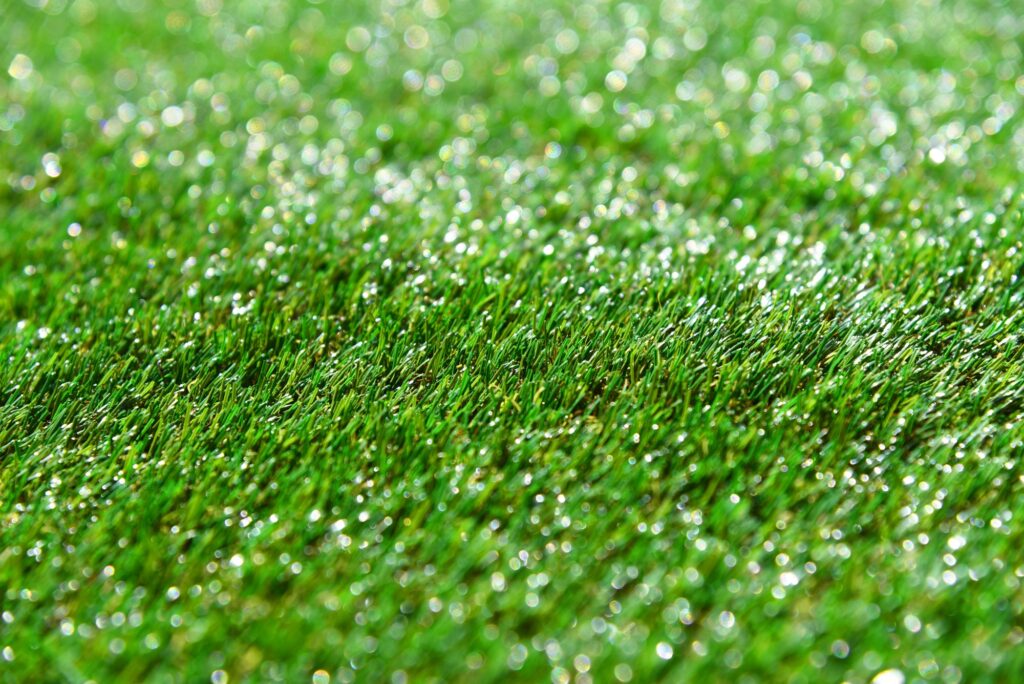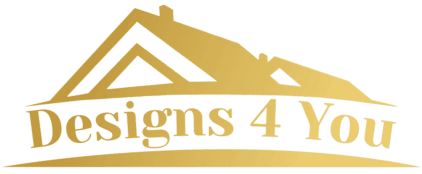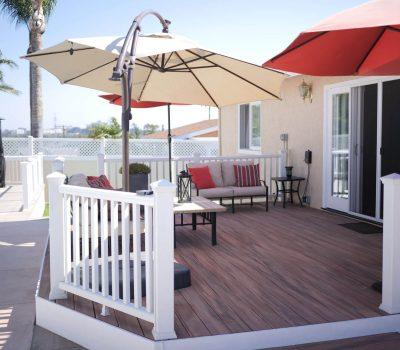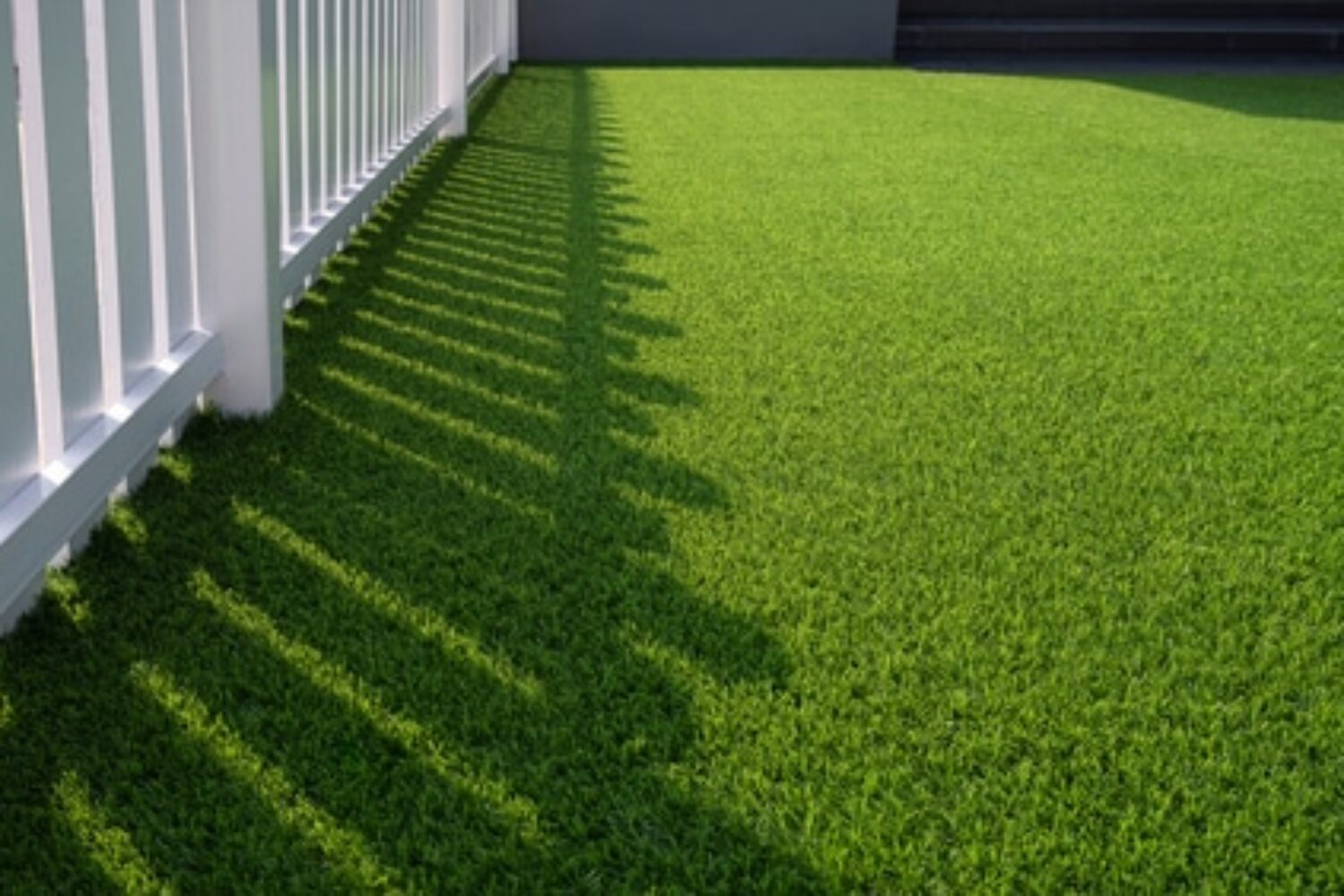
You walk into your backyard and see an empty expanse of dirt. Maybe you’re thrilled by the endless possibilities this patch of ground offers you. Maybe you’re terrified of the responsibility of deciding what to do with it.
One of the first things you’ll want to choose is whether to pick turf or grass. This article will walk you through the pros and cons of each material. It will also give you an overview of the grass growing process and artificial turf installation.
Take a deep breath and read this handy guide!
Artificial Turf
Hitting the playing field in the early 1960s, artificial turf is found in sports stadiums, playgrounds, traffic medians, and yards. Dyed synthetic nylon fibers are simultaneously “tufted”, or poked through a backing layer by hundreds of needles. The backing then receives a foam coating and multiple latex layers to seal the back and offer strength to the turf.
Pros of Artificial Turf
Compared to the “AstroTurf” of the 60s, modern artificial turf offers the look of a lush lawn. It comes in many varieties of grass species to replicate the type of grass that is most common in your area. As opposed to one uniform color and height, the fibers of a single piece of turf vary in length and color to create a more convincing grass look.
Because you can “set it and forget it” you cut back on the maintenance time required for caring for your lawn. No more mowing, edging, weeding, or watering. You’ll cut down on your water consumption and pay less on your water bill!
Your lawn will appear uniform all year round and won’t have patchy spots in the winter or in shady areas of your yard. With speedy installation, you can wake up one day with a barren yard and fall asleep that evening with a green oasis in place.
Cons of Artificial Turf
You pay up-front for the convenience of turf. Turf comes at a higher square foot cost than sod. Additionally, you’ll need to replace the antishock layer and the infill layer every couple of years.
Some of the elements, like the crumb rubber used to fill below the surface of the turf, can harm the environment and people. If you live in a hot climate, it’s worth noting that the surface temperature can be 30 degrees warmer than the asphalt and 80 degrees hotter than real grass.
How to Install Artificial Turf
When it comes time to install artificial turf, just because you can technically DIY it, doesn’t mean you necessarily should. If your goal is to have real-looking turf devoid of ripples or seam lines, artificial turf installation services are your best bet. The overview of turf installation is as follows:
- Excavate about 4 inches of soil
- Create a sub-base by filling the area with crushed rock
- Compact the space so it rests 3/4 inch below the edge
- Cut turf to fit the area by using a sharp utility knife
- Use seam tape and glue to join seams
- With 5 inch non-galvanized nails, secure the turf every 5 inches around the perimeter and every 3 square feet throughout the interior
- Spread about 1 to 1 1/2 pounds of infill per square foot and rake it into the turf
If needed, you can always hire a professional to install it for a seamless look.
Natural Grass
Natural grass is a classic option for lawns around the world. Different grass varieties are suited for different environments. The most popular are Bermuda, Fine Fescue, Kentucky Bluegrass, and Ryegrass.
Pros of Natural Grass
A natural lawn improves the quality of the air by breaking down airborne pollutants and using them as fuel. Natural grass improves soil quality, reduces water run-off, and cools the temperature of the surrounding area.
Natural grass is cheaper to grow up front, coming in at around $0.80 per square foot for sod and $0.15 per square foot for grass seeds. Natural turf feels good underfoot and feels great to lay down on and daydream.
Cons of Natural Grass
Grass requires more constant maintenance than artificial turf. This maintenance translates into money flying out of your wallet and into your lawn. While some aspects of natural grass are more eco-friendly, other aspects like the pesticides and fertilizers required to grow it are not.
Traffic patterns and play areas from children and pets wear down the grass. This could leave bare areas or muddy zones.
How to Grow Natural Grass
- Loosen the soil
- Scatter about 15 grams of seeds per square yard
- Rake seeds to work them into the soil
- Water soil frequently to keep it constantly moist
- Mow only after the grass reaches at least 4 inches
To lay sod:
- Measure the square footage of your yard
- Prepare the soil by tilling and removing dirt clods, rocks, roots, etc.
- Dampen soil and lay sod in a brick pattern as soon as possible after buying it
- Water daily to keep the sod moist while it roots
- Mow the lawn once the grass is tall enough to mow
Again, this is where a professional comes into play if you don’t want to DIY it.
Will Artificial Turf Installation or Natural Grass Be Right for You?
Now that you’ve been through this article, you’re well versed in the pros and cons of artificial turf installation vs. planting natural grass. Armed with this information, you’re more prepared to make the decision for your blank canvas of a yard.
If you’re still not sure what to do, the professionals at Designs 4 You can help you through every step of your landscaping process. From turf to hardscaping and concrete to patio covers, we can help you bring to life the yard of your dreams.
As professionally licensed and insured contractors, the help we offer doesn’t stop at your back door. We can oversee remodels of your kitchen, bathrooms, and more!
Contact us today for a free consultation on your next landscaping, building, or remodeling project!





